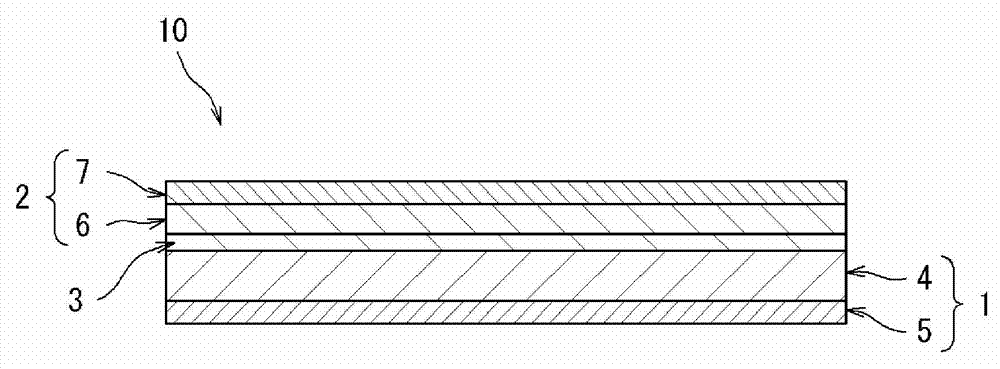Lithium secondary battery
A lithium secondary battery and current collector technology, applied in secondary batteries, lithium storage batteries, batteries, etc., can solve problems such as battery short circuit, solid electrolyte membrane rupture, deterioration of battery characteristics, charge-discharge cycle characteristics, etc., to improve cycle characteristics Effect
- Summary
- Abstract
- Description
- Claims
- Application Information
AI Technical Summary
Problems solved by technology
Method used
Image
Examples
manufacture example 1
[0120]
[0121] (formation of conductive layer)
[0122] A polyurethane foam (porosity: 95%, thickness: 1 mm, number of pores per inch (pore diameter: 847 μm): 30 pores) was used as the resin base material. Form an aluminum film on the surface of polyurethane foam by sputtering so that the weight per unit area is 10 g / m 2 , thereby forming a conductive layer.
[0123] (Molten Salt Plating)
[0124] A urethane foam on which a conductive layer was formed was used as a workpiece. Fix the workpiece on the fixture with power supply function, then place the fixture in the glove box, which has been set as an argon atmosphere and low humidity environment (dew point: below -30°C), and then immerse the fixture at a temperature of 40°C molten salt plating bath (composition: 33 mol% 1-ethyl-3-methylimidazolium chloride (EMIC) and 67 mol% AlCl 3 )middle. Connect the fixture holding the workpiece to the cathode side of the rectifier. An aluminum plate (purity: 99.99%) as a counter e...
manufacture example 2
[0130]
[0131] "Aluminum porous body 2" was obtained by performing the same operation as in Production Example 1, except that the aluminum porous body before annealing was heat-treated at 200°C for 30 minutes instead of heat-treating the porous body at 345°C for 1.5 Hour. The hardness of the "aluminum porous body 2" was 1.12 GPa.
manufacture example 3
[0133]
[0134] (formation of conductive layer)
[0135] A polyurethane foam similar to that used in Production Example 1 was used as the resin base material. A copper film was formed on the surface of polyurethane foam by sputtering so that its weight per unit area was 10 g / m 2 , thereby forming a conductive layer.
[0136] (plating)
[0137] Next, the urethane foam on which the conductive layer was formed was immersed in a copper sulfate plating bath to perform electroplating, thereby obtaining a "copper-resin composite porous body 1" in which the copper-resin composite porous body 1 Copper plating is formed on the surface of the polyurethane foam (copper weight per unit area: 400g / m 2 ).
[0138] (removal of polyurethane foam)
[0139] The "copper-resin composite porous body 1" was heat-treated to burn it, thereby removing the polyurethane foam. Subsequently, the resulting product was heated in a reducing atmosphere to reduce it, thereby obtaining "copper porous bod...
PUM
| Property | Measurement | Unit |
|---|---|---|
| hardness | aaaaa | aaaaa |
| hardness | aaaaa | aaaaa |
| thickness | aaaaa | aaaaa |
Abstract
Description
Claims
Application Information
 Login to View More
Login to View More - R&D
- Intellectual Property
- Life Sciences
- Materials
- Tech Scout
- Unparalleled Data Quality
- Higher Quality Content
- 60% Fewer Hallucinations
Browse by: Latest US Patents, China's latest patents, Technical Efficacy Thesaurus, Application Domain, Technology Topic, Popular Technical Reports.
© 2025 PatSnap. All rights reserved.Legal|Privacy policy|Modern Slavery Act Transparency Statement|Sitemap|About US| Contact US: help@patsnap.com


